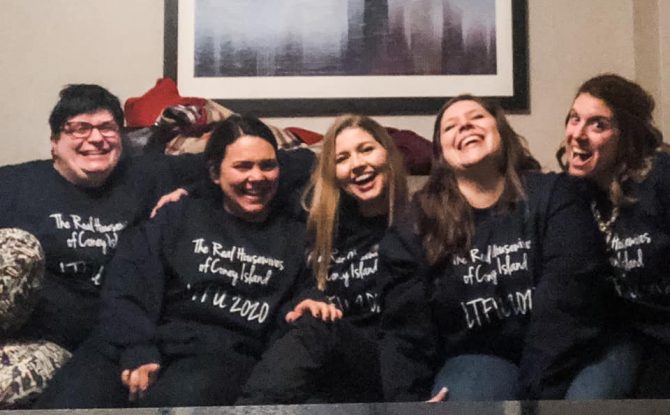If being happy was easy, everyone would do it. Instead, there’s a lot of disagreement over what makes true happiness and how we should achieve it. One thing is clear – real long-term happiness depends more on individual interpretation than the specific situation. Two people can have the same experiences, and one person can report being happy while another person reports feeling unfulfilled.
So if happiness depends on how you interpret your life, are there ways you can choose to be more positive? The answer appears to be yes. There are specific habits and practices that happy people have in common. By choosing to adopt these strategies, you’ll be more likely to reframe your life experiences (both positive and negative!) in a way that can allow you to be as happy as possible.
Give Back
Helping other people is one of the fastest ways to get perspective on your own problems. When I started researching my first book, The Giving Prescription, I expected to find that volunteering helped people get perspective after going through a trauma. But what surprised me was WHY. I assumed that the reason volunteerism helped was because of something called “downward perspective,” meaning when you volunteer, you’re around people less fortunate than yourself, and being exposed to the less fortunate makes you feel grateful for what you have. That can play a role, but it’s not the biggest factor.
A major reason volunteering boosts perspective is because when you give to someone else, you’re increasing your personal power. Sometimes in life we can start feeling helpless or powerless. It may feel like there’s nothing we can do to fix our situation. But when you give back, you have the opportunity to realize that you could have just changed someone’s life. And that boosts your sense of personal power, which increases your self-confidence. Whether you formally become a volunteer through a nonprofit, or you make it a regular habit to give back your community, volunteering will give you the perspective you need to start on your path to happiness.
Take Care
Practicing self-care is on a lot of happiness lists. Some people recommend you work out and eat healthy. Others say you should meditate or take daily bubble baths. It matters less WHAT you do, than that you do it at all. Taking care of yourself isn’t optional for happy people.
A friend of mine once told me “you can’t pour from an empty cup.” I was running myself ragged trying to succeed at work and at home and in my volunteer life… and I was exhausted. I was happy that other people were pleased with my efforts, but I wasn’t HAPPY. How could I be happy, when I was miserably running myself into the ground? I had to realize that making other people proud of me wasn’t the same as being truly happy within myself.
What does “taking care of yourself” mean to you? It can be physical, mental, or emotional… as long as you find your own version and seek it out.
I had to realize that making other people proud of me wasn’t the same as being truly happy within myself.
Give Thanks
When I first heard of gratitude journals, I admit I thought they sounded a little… fluffy. Like, kumbaya, let’s all hold hands and talk about what we’re thankful for around the campfire. Then I hit a period of feeling depressed, when the bad things in my life felt ever-present, and the good things in life seemed to evaporate. In the middle of a rant to my husband about how terribly my life was going, he said “whatever happens, you’ll always have my love.”
That moment stopped me cold, because I realized what I was saying to him. If “everything sucks and nothing good ever happens to me,” I’m insulting my marriage. I’m saying his love isn’t something to be grateful for. That day, when I picked up a pen to vent in my journal about my frustrations, I made sure to balance every negative out with a positive. I didn’t do it in list format. I just noted my struggles as usual, but then afterward I wrote about one strength to balance out each struggle.
I have a friend who writes a thank you note every work day. Her postage stamp budget must be through the roof! But that’s how she spends time expressing gratitude. Maybe prayer is a good way for you to express gratitude. Heck, even a text message is better than nothing! But at least once a week, do something to reflect on (and hopefully express) what’s going right. When you focus on what’s going right instead of what’s going wrong, it’s much easier to foster happiness.
Take Time
We live in a world of speed. The faster we can make decisions and solve problems, the better. Moving on quickly in the face of an upset is considered a skill. There’s even a name for it: action-bias. We’re primed to want to move fast and put our problems behind us.
But…
When we move quickly, we aren’t always taking the time to make the best choices. For the past 3 years, I’ve been researching how people can successfully move on when situations in their life change. One common thread I found in my research is that making smart decisions (especially in uncertain environments and changing situations) takes time.
We’re all busy people, but thoughtfulness matters. When you resist jumping to action just to be in motion, and instead pause to gather information, you’re more likely to make smart choices. Don’t do the next thing on the list just because it’s the next thing on the list. Don’t get caught up in accomplishment for accomplishment’s sake. Happy people take time to reflect on whether their choice is the right choice for long-term good.
Happiness is elusive. It’s more of a regular practice than a destination. Work these 4 habits into your regular behaviors and try to think about them at least once a week. If you do, you’ll be on the path to building happiness in no time.











